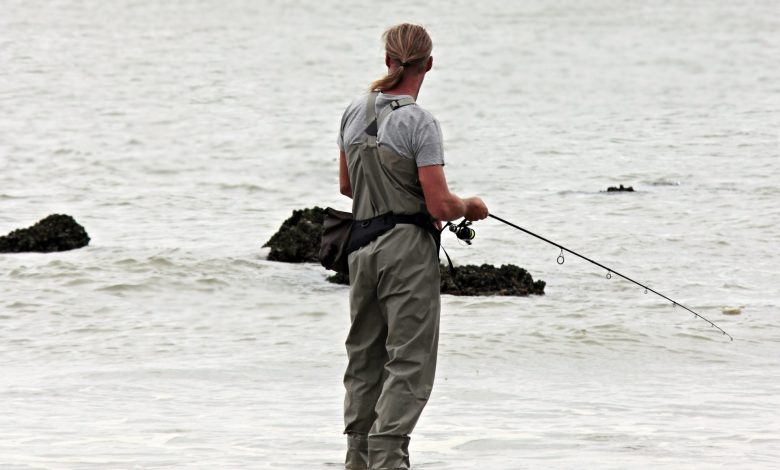Why do you need a fishing bite alarms?

A bite alarm can be a very important part of carp fishing, especially against bigger carps, thus they’re able to stay calm when they’re hooked and can even spit out the hook. If that happens, you might miss your chance to set a new personal best.
If you never used it you can’t imagine how much more convenient fishing bite alarms are.
The bite alarm gives you crucial indicators by beeping, along with the movement of the bobbin. Understanding these actions is key to landing bigger catches.
Keep in mind that these fishing bite alarms can also be a great gift.
Other tool and equipment to use with bite alarms
First of all, it is essential to know how to set up your alarm correctly. In order to do this, you will need the right equipment:
- A rod pod or some bank sticks to fix the alarm to
- Batteries for the alarm if needed
- Bobbins or hangers if needed
- Also before purchasing everything make sure all of the components are compatible with each other, otherwise you will face some struggling issues
Prepare your rod for bite alarm
Feed the bobbin or hanger into the alarm thread, after that screw the bobbin or other hangers into the rod pod or bank sticks.
Face the bite alarm away from the water. This may need some maneuvering into position or an extra bolt to secure it.
Use a rubber washer to prevent it from stripping your thread.
Once set up, ensure your line is running through the bite alarm, then adjust the options on the alarm to suit your needs.
Keep the tip of the rod low, so the wind doesn’t set off the bite alarm incorrectly.
Don’t over-tighten the alarm, as this can cause damage.
Strength and volume advice
Traditional bite alarms had a set sound, but most modern ones have volume control. Bear in mind that you may be around other anglers who may also be using an alarm, so try not to have your volume set too high.
It could cause annoyance or make others think they’ve got a catch. It might be great for you to know that you’ve caught a fish, but the rest of the world doesn’t need to know.
It should be loud enough for you to hear from your bivvy, but that’s about it. If you’re too far away to hear it at a low volume, then it might be a good idea to invest in a receiver.
Alarm functions and fishing lure baits
Some bite alarms allow you to set different functions. This has two benefits:
- You can use the tone-setting to distinguish your alarm from other anglers’.
- You can use different tones for different rods if you’re using more than one.
A low-function setting reduces the chance of the sound traveling, which can be irritating to other anglers around the water.
Bait alarm awareness
Some of these modern alarms also have a sensitivity setting, which allows you to adjust how reactive your alarms will be.
If you’re going after big fish that may only make a slight tug on your line, you may want to turn this level up. But you don’t want your alarm to be going off every 30 seconds either, as this can be misleading and frustrating. Finding the right balance is key. Since all conditions and setups are a little different, it’s really about trial and error. Here are the things to look out for:
Braid and fluorocarbon lines sit lower in the water than monofilament, so you can afford to set the sensitivity higher without the wind making false alarms.
A heavier bobbin and terminal tackle will let you set a higher sensitivity since the wind won’t pull the line as much. On the other hand, if you’re using ultra-light tackle, the fish will make a bigger impact, so you can lower the alarm’s sensitivity.
If you’re fishing at long range, the fish will make less detectable vibrations, so you’ll probably need a higher sensitivity setting.
In rivers or canals with boat traffic or debris, you can get a lot of false alarms just from the flow of the water. That’s when you want to turn the sensitivity down.
Wind: While you can control your own setup, the wind will probably dictate the sensitivity setting more than anything else. Remember that the direction and speed can change at any time, so you may have to adjust the setting throughout the session.
Bite alarms for carp fishing
This type of bite alarm is made out of a magnetic wheel. They are activated when your line moves the wheel. Magnets get activated when the line passes. Another type of bite alarm that is also suitable for carp fishing is a vibrating sensor, it detects movement underwater beforehand, it has a small shaped Y sensor that sits upon your fishing rod line. When the lines start to move assumingly by some soft fish the alarm goes off.
Summary
Bite alarms can really help you out if you are not taking care of the rod constantly, perhaps you are grilling your dinner already or having a deep conversation with your fellow friend. It will certainly ring and notify you that you may be having a huge party later on.
If you are interested in learning more feel free to visit DuoHook.ie





